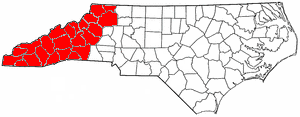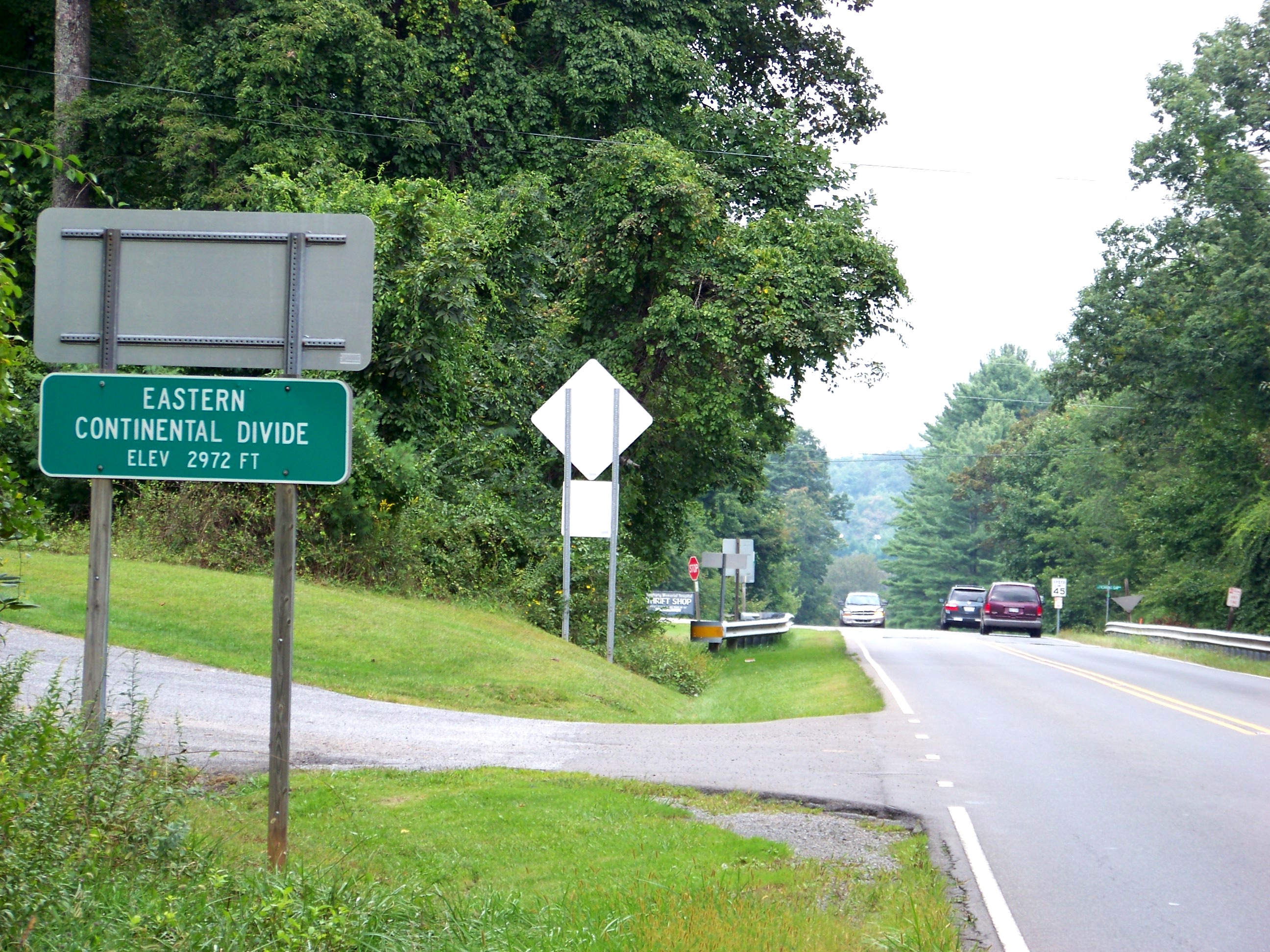|
Spanish Oak Mountain
Spanish Oak Mountain is a mountain in the North Carolina Western North Carolina, High Country, located southwest from the town of Newland, North Carolina, Newland. Its elevation reaches . Most feeder streams from the mountain flow to the North Toe River; except for White Pine Creek, from its southeastern slope, which flows to the Linville River. The mountain is partitioned by the Eastern Continental Divide. The mountain is named after Quercus falcata, Spanish Oak, a type of red oak, which can be found on the mountain. The mountain is predominantly covered by Abies fraseri, Fraser Fir farms, a popular choice of Christmas tree. References {{Mountains of North Carolina Mountains of North Carolina Mountains of Avery County, North Carolina ... [...More Info...] [...Related Items...] OR: [Wikipedia] [Google] [Baidu] |
Avery County, North Carolina
Avery County is a county located in the U.S. state of North Carolina. As of the 2020 census, the population was 17,806. The county seat is Newland. The county seat was initially established in Elk Park when the county was first formed, but was moved to Newland upon completion of the courthouse in 1912. Founded in 1911, it is the youngest of North Carolina's 100 counties. History The county is the newest of North Carolina's 100 counties. It was formed in 1911 from parts of Caldwell County, Mitchell County, and Watauga County. It was named for Waightstill Avery, a colonel in the American Revolutionary War and the first Attorney General of North Carolina (1777-1779). It is often noted for the large amount of Christmas trees that the county produces. The county seat was originally in the Town of Elk Park, which was then the largest town in the county, located on the county's north end, on the Tennessee line. Upon completion of the county's courthouse in 1912, the seat was moved ... [...More Info...] [...Related Items...] OR: [Wikipedia] [Google] [Baidu] |
North Carolina
North Carolina () is a state in the Southeastern region of the United States. The state is the 28th largest and 9th-most populous of the United States. It is bordered by Virginia to the north, the Atlantic Ocean to the east, Georgia and South Carolina to the south, and Tennessee to the west. In the 2020 census, the state had a population of 10,439,388. Raleigh is the state's capital and Charlotte is its largest city. The Charlotte metropolitan area, with a population of 2,595,027 in 2020, is the most-populous metropolitan area in North Carolina, the 21st-most populous in the United States, and the largest banking center in the nation after New York City. The Raleigh-Durham-Cary combined statistical area is the second-largest metropolitan area in the state and 32nd-most populous in the United States, with a population of 2,043,867 in 2020, and is home to the largest research park in the United States, Research Triangle Park. The earliest evidence of human occupation i ... [...More Info...] [...Related Items...] OR: [Wikipedia] [Google] [Baidu] |
Blue Ridge Mountains
The Blue Ridge Mountains are a physiographic province of the larger Appalachian Mountains range. The mountain range is located in the Eastern United States, and extends 550 miles southwest from southern Pennsylvania through Maryland, West Virginia, Virginia, North Carolina, South Carolina, Tennessee, and Georgia. This province consists of northern and southern physiographic regions, which divide near the Roanoke River gap. To the west of the Blue Ridge, between it and the bulk of the Appalachians, lies the Great Appalachian Valley, bordered on the west by the Ridge and Valley province of the Appalachian range. The Blue Ridge Mountains are known for having a bluish color when seen from a distance. Trees put the "blue" in Blue Ridge, from the isoprene released into the atmosphere. This contributes to the characteristic haze on the mountains and their perceived color. Within the Blue Ridge province are two major national parks – the Shenandoah National Park in the northern secti ... [...More Info...] [...Related Items...] OR: [Wikipedia] [Google] [Baidu] |
United States Geological Survey
The United States Geological Survey (USGS), formerly simply known as the Geological Survey, is a scientific agency of the United States government. The scientists of the USGS study the landscape of the United States, its natural resources, and the natural hazards that threaten it. The organization's work spans the disciplines of biology, geography, geology, and hydrology. The USGS is a fact-finding research organization with no regulatory responsibility. The agency was founded on March 3, 1879. The USGS is a bureau of the United States Department of the Interior; it is that department's sole scientific agency. The USGS employs approximately 8,670 people and is headquartered in Reston, Virginia. The USGS also has major offices near Lakewood, Colorado, at the Denver Federal Center, and Menlo Park, California. The current motto of the USGS, in use since August 1997, is "science for a changing world". The agency's previous slogan, adopted on the occasion of its hundredt ... [...More Info...] [...Related Items...] OR: [Wikipedia] [Google] [Baidu] |
Western North Carolina
Western North Carolina (often abbreviated as WNC) is the region of North Carolina which includes the Appalachian Mountains; it is often known geographically as the state's Mountain Region. It contains the highest mountains in the Eastern United States, with 125 peaks rising to over 5,000 feet (1,500 meters) in elevation. Mount Mitchell at 6,684 feet (2,037 meters), is the highest peak of the Appalachian Mountains and mainland eastern North America. The population of the region, as measured by the 2010 U.S. Census, is 1,473,241, which is approximately 15% of North Carolina's total population. Located east of the Tennessee state line and west of the Piedmont, Western North Carolina contains few major urban centers. Asheville, located in the region's center, is the area's largest city and most prominent commercial hub. The Foothills region of the state is loosely defined as the area along Western North Carolina's eastern boundary; this region consists of a transitional terrain of hi ... [...More Info...] [...Related Items...] OR: [Wikipedia] [Google] [Baidu] |
Newland, North Carolina
Newland is a town in Avery County, North Carolina, United States. The population was 698 at the 2010 census. It is the county seat of Avery County. History Before its founding, the area was known as "Old Fields of Toe". It was an early muster ground in the campaign against Indians and before the Battle of Kings Mountain. On November 9, 1783 the land was granted to Colonel Waightstill Avery. The name comes from the legend of Estatoe, pronounced 'S - ta - toe', about an Indian chief's daughter who fell in love with a warrior of a rival tribe. Because their love could never be accepted by either's families, they jumped from a precipice into the depths of a nearby river. In an alternative version, their love caused a bloody war between the tribes and Estatoe crafted a peace pipe with two stems in which both chiefs could smoke at once. The two rival chiefs assembled their respective followers on the bank of the river, and smoked till peace was concluded and Estatoe married her lover. ... [...More Info...] [...Related Items...] OR: [Wikipedia] [Google] [Baidu] |
North Toe River
The North Toe River is the River source, headwaters of the Nolichucky River and a tributary in the French Broad River Drainage basin, basin. From its source at Sugar Gap, between Bald Mountain and Sugar Mountain (North Carolina), Sugar Mountain, it flows westerly through Avery County, North Carolina, Avery, Mitchell County, North Carolina, Mitchell, and Yancey County, North Carolina, Yancey counties. History The earliest inhabitants in the Toe River valley area were both the Catawba people, Catawba and Cherokee Native Americans in the United States, Indians; though neither lived in the area permanently, it is believed both tribes used the area as a hunting ground. In 1540, the first European to the area was the Spanish explorer Hernando de Soto. Evidence of his visit includes Spanish mining at the Sink Hole, Clarissa, and Horse Stomp mines in Mitchell County. In the late 1560s, Spanish explorer Juan Pardo (explorer), Juan Pardo also visited the area in an attempt to establish a l ... [...More Info...] [...Related Items...] OR: [Wikipedia] [Google] [Baidu] |
Linville River
The Linville River is a river in western North Carolina. The river begins in the slopes of Peak Mountain, Sugar Mountain and Flattop Mountain, in the Linville Gap area (also known as Tynecastle). As it goes south through Avery County, it passes through the communities of Grandfather, Linville, Pineola, Crossnore and finally at Linville Falls. After entering Burke County at the community of Linville Falls, the river becomes the centerpiece of the Linville Falls and the Linville Gorge, an area referred to as "the Grand Canyon of North Carolina." After approximately 30 miles (48 km), the river ends at Lake James and the Catawba River The Catawba River originates in Western North Carolina and flows into South Carolina, where it later becomes known as the Wateree River. The river is approximately 220 miles (350 km) long. It rises in the Appalachian Mountains and drains into ...; the original confluence with the Catawba River has been flooded by the creation of the r ... [...More Info...] [...Related Items...] OR: [Wikipedia] [Google] [Baidu] |
Eastern Continental Divide
The Eastern Continental Divide, Eastern Divide or Appalachian Divide is a hydrographic divide in eastern North America that separates the easterly Atlantic Seaboard watershed from the westerly Gulf of Mexico watershed. The divide nearly spans the United States from south of Lake Ontario through the Florida peninsula, and consists of raised terrain including the Appalachian Mountains to the north, the southern Piedmont Plateau and lowland ridges in the Atlantic Coastal Plain to the south. Water including rainfall and snowfall, lakes, streams and rivers on the eastern/southern side of the divide drains to the Atlantic Ocean; water on the western/northern side of the divide drains to the Gulf of Mexico. The ECD is one of six continental hydrographic divides of North America which define several drainage basins, each of which drains to a particular body of water. __TOC__ Course The Eastern Triple Divide is the northern terminus of the Eastern Continental Divide where it inter ... [...More Info...] [...Related Items...] OR: [Wikipedia] [Google] [Baidu] |
Quercus Falcata
''Quercus falcata'', also called southern red oak, spanish oak, bottomland red oak or three-lobed red oak is an oak (part of the genus ''Quercus''). Native to the southeastern United States, it gets its name the "Spanish Oak" as these are the areas of early Spanish colonies, whilst "southern red oak" comes from both its range and leaf color during late summer and fall. The southern red oak is a deciduous angiosperm, so has leaves that die after each growing period and come back in the next period of growth. Description ''Quercus falcata'' is a medium to large-sized deciduous tree tall, with a few forest grown specimens on highly productive sites reaching , with a trunk up to in diameter, the crown with a broad, round-topped head. The leaves are long and wide, with 3 to 5 sharply pointed, often curved, bristle-tipped lobes, the central lobe long and narrow; the small number of long, narrow lobes is diagnostic, readily distinguishing southern red oak from other red oaks. The b ... [...More Info...] [...Related Items...] OR: [Wikipedia] [Google] [Baidu] |
Abies Fraseri
The Fraser fir (''Abies fraseri'') is a species of fir native to the Appalachian Mountains of the Southeastern United States. ''Abies fraseri'' is closely related to ''Abies balsamea'' (balsam fir), of which it has occasionally been treated as a subspecies (as ''A. balsamea'' subsp. ''fraseri'' (Pursh) E.Murray) or a variety (as ''A. balsamea'' var. ''fraseri'' (Pursh) Spach).Farjon, A. (1990). ''Pinaceae. Drawings and Descriptions of the Genera''. Koeltz Scientific Books .Liu, T.-S. (1971). ''A Monograph of the Genus Abies''. National Taiwan University.Flora of North America''Abies fraseri''/ref>Gymnosperm Database''Abies fraseri''/ref> Names The species ''Abies fraseri'' is named after the Scottish botanist John Fraser (1750–1811), who made numerous botanical collections in the region. It is sometimes misspelled "Frasier," "Frazer" or "Frazier." In the past, it was also sometimes known as "she-balsam" because resin could be "milked" from its bark blisters, p343 in cont ... [...More Info...] [...Related Items...] OR: [Wikipedia] [Google] [Baidu] |
Christmas Tree
A Christmas tree is a decorated tree, usually an evergreen conifer, such as a spruce, pine or fir, or an artificial tree of similar appearance, associated with the celebration of Christmas. The custom was further developed in early modern Germany where German Protestant Christians brought decorated trees into their homes. It acquired popularity beyond the Lutheran areas of Germany and the Baltic governorates during the second half of the 19th century, at first among the upper classes. The tree was traditionally decorated with "roses made of colored paper, apples, wafers, tinsel, ndsweetmeats". Moravian Christians began to illuminate Christmas trees with candles, which were often replaced by Christmas lights after the advent of electrification. Today, there is a wide variety of traditional and modern ornaments, such as garlands, baubles, tinsel, and candy canes. An angel or star might be placed at the top of the tree to represent the Angel Gabriel or the Star of Bethle ... [...More Info...] [...Related Items...] OR: [Wikipedia] [Google] [Baidu] |






